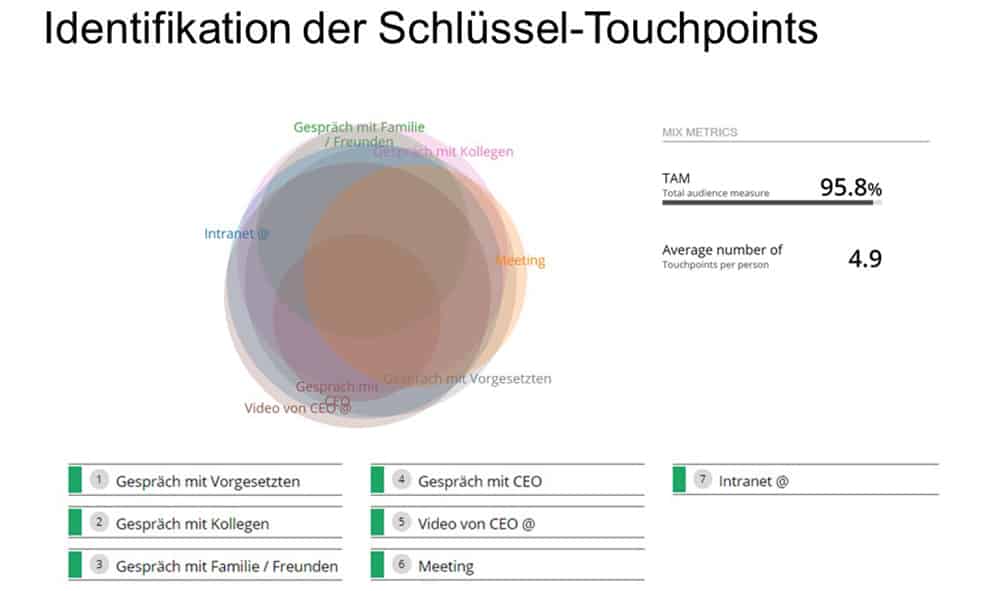These touchpoints are essential in internal communication
The Perikom fact check evaluated the touchpoints of internal communication with the highest reach and most relevance in three large Swiss companies. The intranet reaches employees the most, followed by the conversation with superiors and colleagues. But when it comes to the relevance of information, the conversation with the boss is unbeaten.

Perikom, together with Accelerom and the HWZ Hochschule für Wirtschaft Zürich, conducted a fact check in March 2021. In the online survey, it was ascertained which communication touchpoints employees use most and which they consider most relevant. The findings of the study are intended to help companies set the right focus in internal communications.
Intranet central for Information Retrieval
When asked which touchpoints employees use to obtain information, the intranet comes out on top. The conversation with the direct supervisor and colleagues is right behind.
Video messages from the CEO are also seen as very important - which has presumably experienced a significant upswing, especially in times of Corona. However, when it comes to the question of where employees come into contact with a new topic for the first time, the conversation with superiors is in first place.
Discussions with superiors still most important
The central role of the conversation with superiors is striking. This touchpoint scores top marks in all phases of the information process. Talks with superiors - whether in a team meeting or in an individual discussion - are experienced as extremely credible and relevant when it comes to changing an opinion or behavior.
Older people generally use more touchpoints than Young
The fact check also revealed that the use of touchpoints is related to the characteristics of the employees: The more extroverted a person is, the more touchpoints they use.
In addition, older employees are more inclined toward digital channels than younger ones. This is in contrast to the stereotype that young equals digital. However, this can be explained by the fact that younger employees are generally less informed, while older employees are more attentive to new information.

Direct exchange is central
So what do the results of the study mean for practice? The results were presented to a group of ten communications managers for discussion. They agreed that internal communication touchpoints - such as the intranet or an information event - do generate attention for a topic. However, this is not sufficient to bring about a change in employee behavior.
Communication is needed from superiors as well as colleagues. This is where the greatest potential lies in internal communication. However, the path to this goal seems long and difficult, concepts for this are rare in practice, and resources are often lacking.
But without the inclusion of management communication and communication in internal networks among the employees themselves, communication managers cannot establish value-added internal communication.
Take - Aways
- The internal communication channels such as intranet, employee newspaper or newsletter generate a lot of reach, but have a rather deeper relevance.
- Face-to-face conversations, whether with colleagues or superiors, are central when it comes to anchoring messages.
- Contrary to the typical rule of thumb "the younger, the more digital", more digital touchpoints are used as people get older.
- Differences between office workers and people in manual or industrial occupations are rather marginal. Both occupational groups use a similar number of digital touchpoints.
The study "Fact check 2021: Touchpoints in communication with employees". was developed jointly by Perikom, the HWZ and Accelerom. Using a standardized questionnaire validated by the University of Zurich, 891 employees at SBB, Lindt & Sprüngli and Clariant were surveyed online in March 2021. The average interview duration was 18 minutes. Details of the study are available at Perikom.ch.








